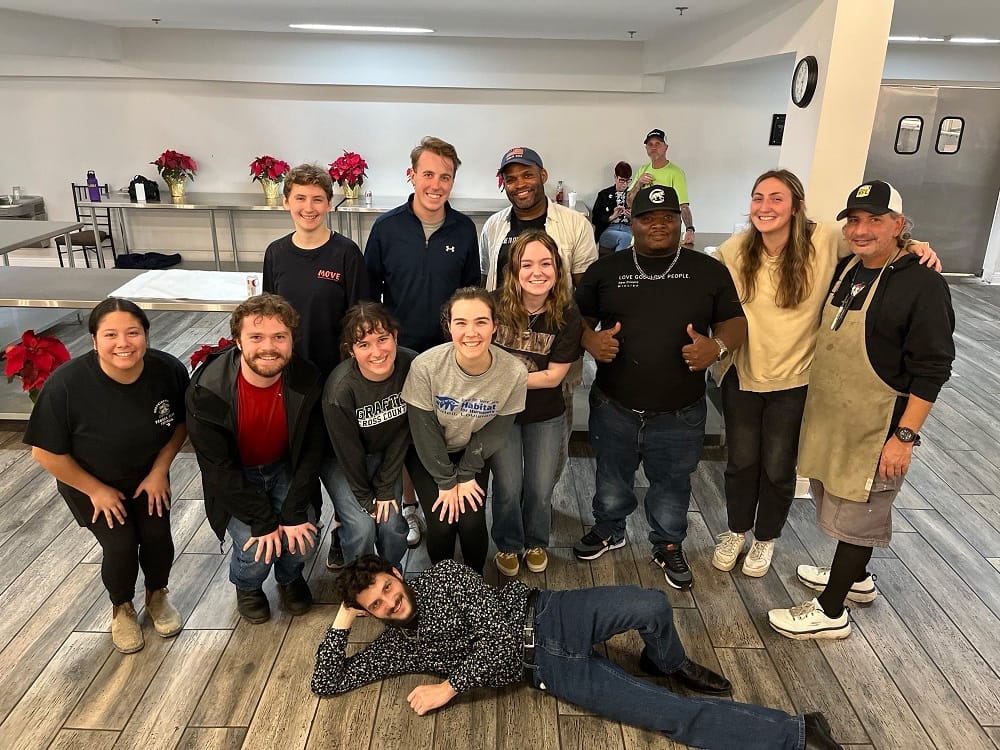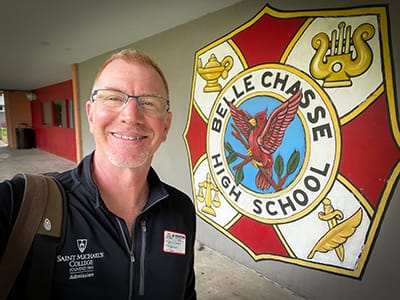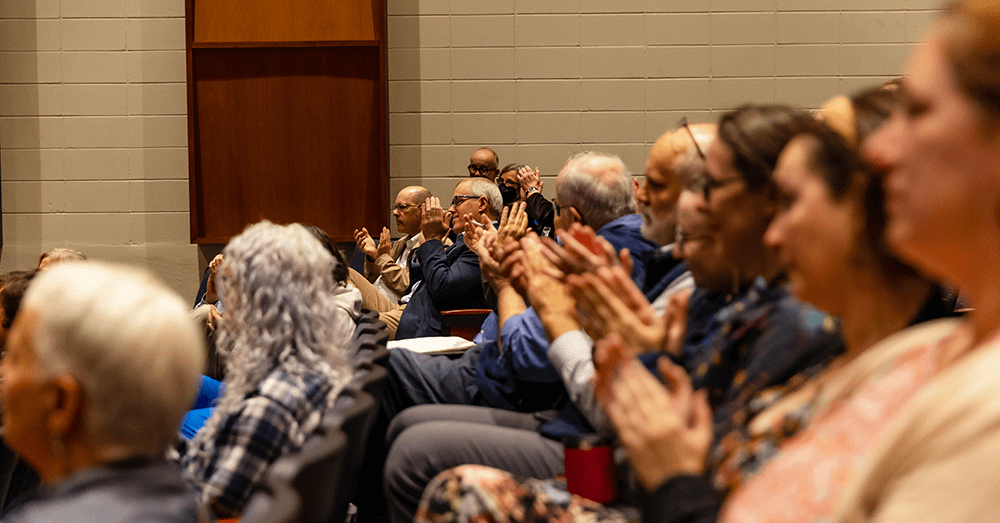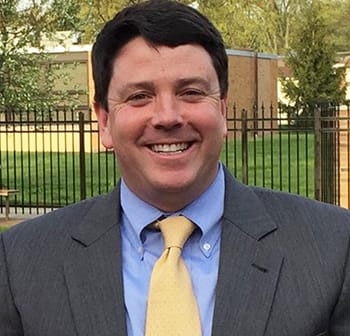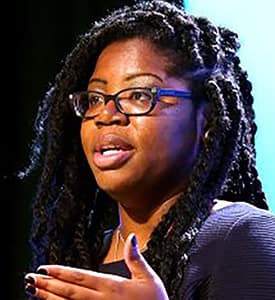Math makes ‘Hudson River’ flow north
On Saturday April 2, 2016, nearly 300 mathematics students and faculty from New England and beyond converged on Saint Michael’s College for the 23rd annual Hudson River Undergraduate Mathematics Conference. One hundred and twenty papers were presented by students and faculty members during concurrent topic-oriented sessions and Scott Aronson, MIT professor and expert in the Computation and Complexity Theory, gave the plenary address to a packed Recital Hall in the McCarthy Arts Center.
History and Overview
The Hudson River Undergraduate Mathematics Conference ((HRUMC) was founded in 1994 by a consortium of colleges located mostly in the Albany, NY area, hence the title “Hudson River”. Originally, the conference rotated among the founding institutions: Union, Skidmore, Williams, and Siena Colleges, but gradually other colleges were added, and HRUMC travelled Massachusetts, New Hampshire, and New York. This year marks a milestone as the “Hudson” flowed north, and was held for the first time ever in Vermont, with Saint Michael’s as host. Despite the more remote location, conference participation increased, with attendees from the New England states and New York.
The purpose of the HRUMC is to provide students with an opportunity to present their own research and to experience a professional mathematics meeting aimed especially at undergraduates. Although HRUMC always features an hour-long plenary address by a prominent speaker, the majority of the day is taken up with short talks (15 minutes) by students and faculty members. There are talks for specialists as well as talks aimed at a broader audience and accessible to first- and second-year students. The presentations may describe independent study projects or collaborative student-faculty research. Some talks present original research; others are more expository in nature; some faculty talks feature highlights of new courses or curricular innovations. The papers are organized by topic — such as Geometry, Number Theory, Applied Math, Statistics, Computer Science — into three sets of parallel sessions. This year there were 38 sessions in all, with 3 or 4 papers presented in each session – a total of 120 talks. Students as well as faculty served as session chairs.
Overall the Conference aims to create an atmosphere that conveys the message “welcome to the mathematics community! “ and encourages students to continue their pursuit of mathematics, whether they are math majors or minors or are pursuing another field of study.
Saint Michael’s College Participation- A Tradition
Saint Michael’s participation in HRUMC dates back to 1998, when four SMC students presented talks at Union College. These pioneers were: Jim Donegan ’98, Wendy Shepard ’99, Beth White ’99, and Joe Kudrle ’99 (who is now a Senior Lecturer in Mathematics at the University of Vermont). Sarah Menard ’99 and Angie Lavoie ’01 also attended – and gave talks in a subsequent year. One or two van-loads of Mathematics and Computer Science students and faculty have gone to nearly every HRUMC since then, with more than 150 Math and Computer Science alumni participating over the years.
Papers presented by Saint Michael’s students typically stem from their Senior Seminar, an Honors Thesis, a Summer Research Experience, or one of their courses. In recent years, Prof. Jo Ellis-Monaghan’s Senior Seminar students have created attractive props for their presentations: mathematical surfaces or solids, many printed on 3-D printers in SMC’s own Maker Space. This year’s collection included a fractal landscape, spinning tops, wood-burned images of “Spirograph” curves, crocheted coral reefs illustrating hyperbolic geometry, and a particularly beautiful rendering of “Stereographic Projections of Loxodromes on a Sphere” (see photo). Students who participated in a Summer Research Experience, either at SMC or elsewhere frequently describe the results of their explorations; for example, members of Jo and Greta Pangborn’s summer research team on Graph Theory and DNA Self-Assembly have presented at many past meetings. Students who have done particularly good work on class projects are also encouraged to present at HRUMC. For instance, students in Professor George Ashline’s History of Mathematics course (given in the Fall semester in alternate years) are always assigned a term paper on a historically significant mathematical development, and these are easily turned into HRUMC presentations.
This year, 14 Saint Michael’s students were among the presenters:
Katelyn Bania ’16: “Generating Spirographs and the Mathematical Rose”
Marcella Daley ’17: “Non-Orientable Surfaces”
Rachel Field ’17: “Gyroid Surface”
Brianna Healy ’16: “Fractal Landscape Generation”
Nate Hodge and Logan David ’16: “Spinning Tops: Physics That Will Make You Dizzy”
Boris Li ’16: “Fibonacci Pineapples”
Celsey Lumbra and Mackenzie Edmondson ’16: “Archimedean Solids”
Kristen McCarthy, ’16: “Stereographic Projections of Loxodromes on a Sphere”
Bethany Ramrath, ’16: “Hyperbolic Crocheting”
Samantha Tremblay and Conor Disher, ’17: “The Prison Epidemic: Using Graph Theory to Model Contagion”
Melissa Westland, ’16: “Using Weierstrass Elliptic Functions to Look at Motion in an Asymmetric Double Well Potential” and “Topics in Knot Theory”
Three Faculty members also gave talks:
George Ashline, Mathematics:
“The Pythagorean Theorem: Some History, Derivations, and Extensions”
Zsuzsanna Kádas, Mathematics:
“Population Models and the Logistic Equation: the Importance of Being Discrete”
John Trono, Computer Science:
“Predicting the NCAA Men’s Postseason Basketball Poll More Accurately”
Main Speaker: Entertaining and Accessible
In his plenary address titled “P ?= NP” Professor Scott Aronson provided an overview of deep questions about computability that was both lighthearted and insightful. Currently on the faculty at MIT and newly appointed as David J. Bruton Jr. Centennial Professor of Computer Science at the University of Texas at Austin, Aronson has an international reputation for his expertise in the Theory of Computation. He studies the fundamental limits on what can be efficiently computed in the physical world, including quantum computing, the most powerful model of computation currently known. After the talk, Professor Aronson joined attendees for lunch in the Roy Room of the Dion Center and was seen engaged in lively discussions of computational theory with students.
Organization and Funding
The daunting task of organizing HRUMC was spearheaded by local organizers Professors Jim Hefferon and Lloyd Simons, with other Math Department members pitching in as needed. A team of students, outfitted in bright yellow and purple HRUMC T-shirts, designed by the students, welcomed attendees at the Registration desk and were stationed around the campus to provide directions. Funding HRUMC proved particularly challenging this year since the national funding previously available had expired. The Office of the Vice President for Academic Affairs at Saint Michael’s has consistently supported this event, providing funds for student and faculty travel each year. The Vice President for Academic Affairs again provided the critical initial commitment of support that allowed the event to be held at SMC, with the conference made possible by combination of funds provided by the Departments of Mathematics and Computer Science, generous grants from the NASA-VT Space Grant Consortium, and from Pi Mu Epsilon, the national Mathematics honor society.
Footnote: Although the focus of HRUMC is the accomplishment of students, it also provides an opportunity for faculty at participating colleges to renew their friendships and share ideas. This year we had a particularly happy reunion of two long-time HRUMC mentors who had both been named winners of the 2016 Award for Excellence in Teaching by their respective Sections of the Mathematical Association of America: Patti Frazer Lock from St. Lawrence University for the Seaway Section, and our own George Ashline for the Northeast Section.
